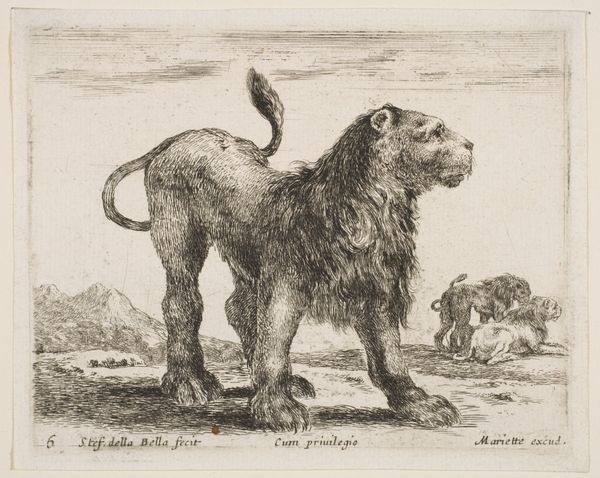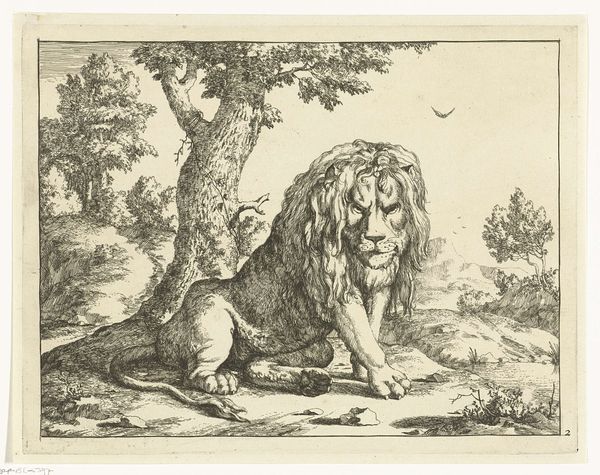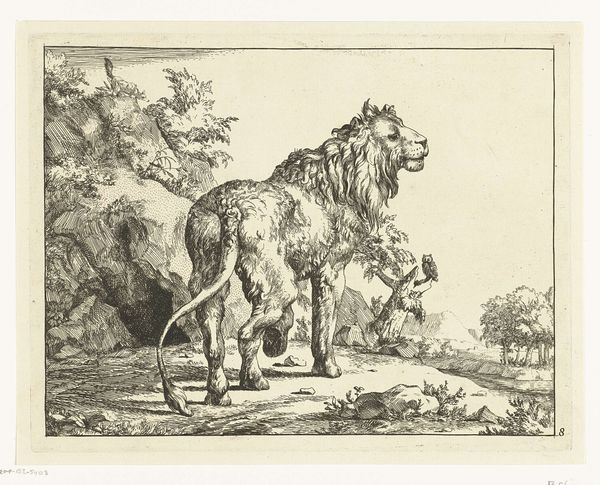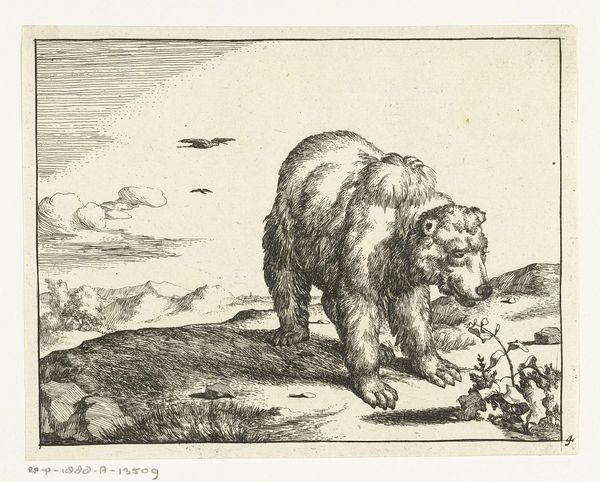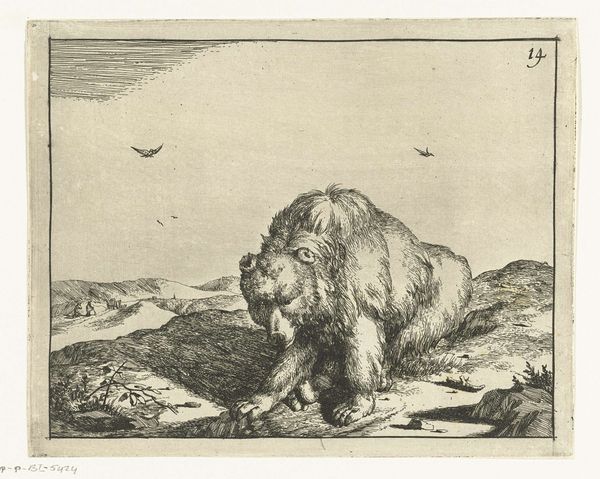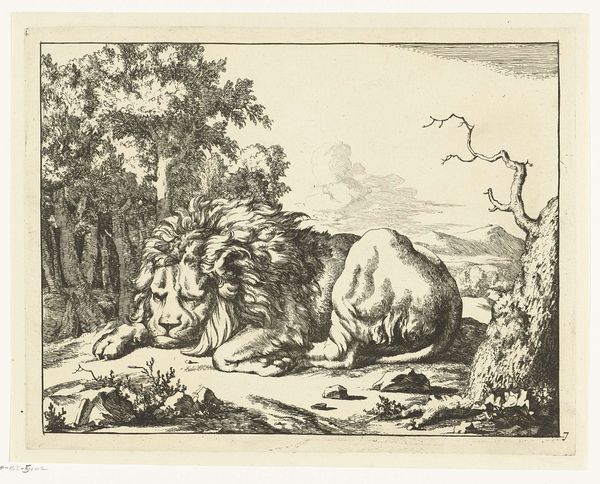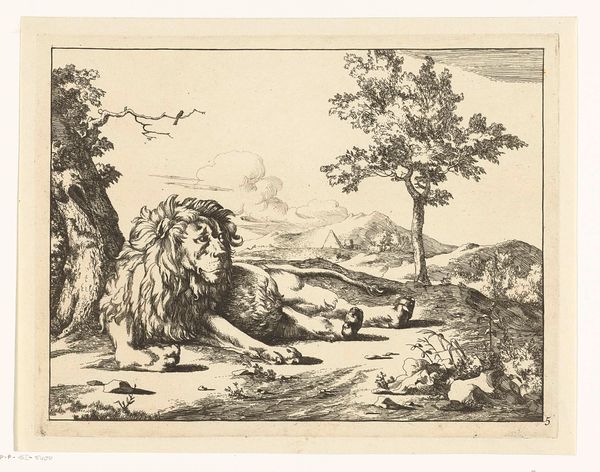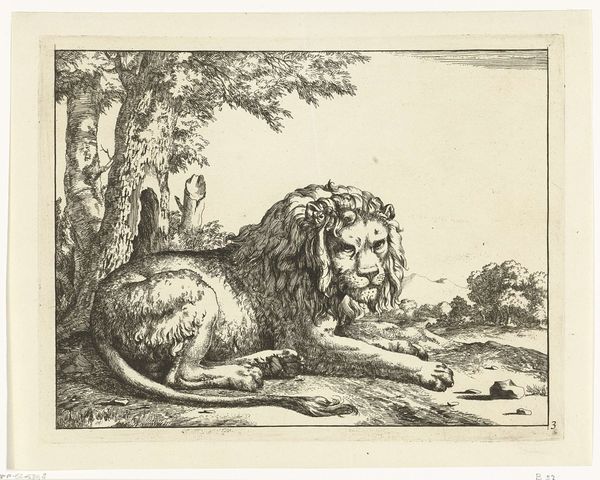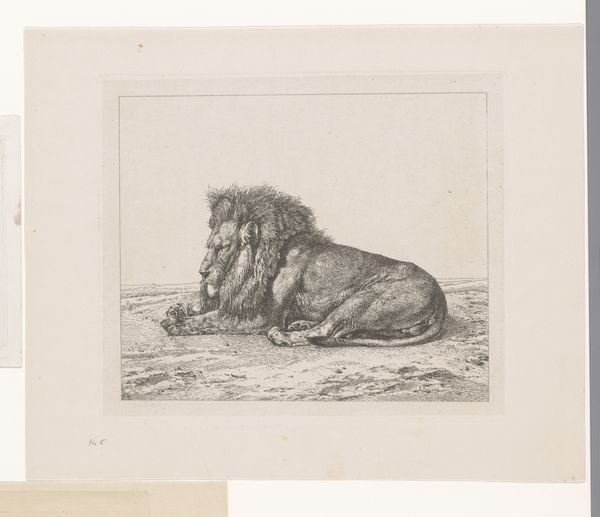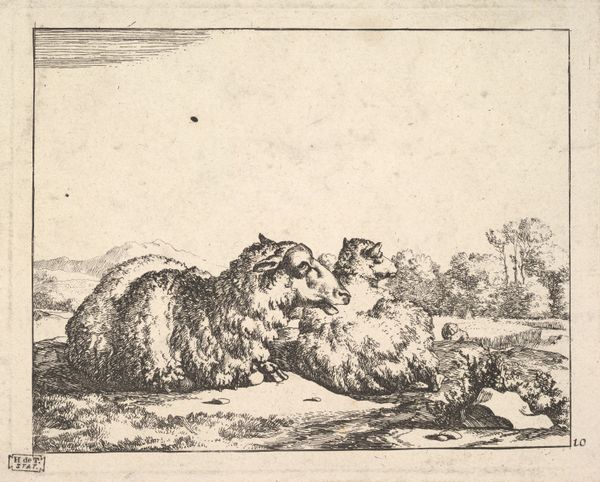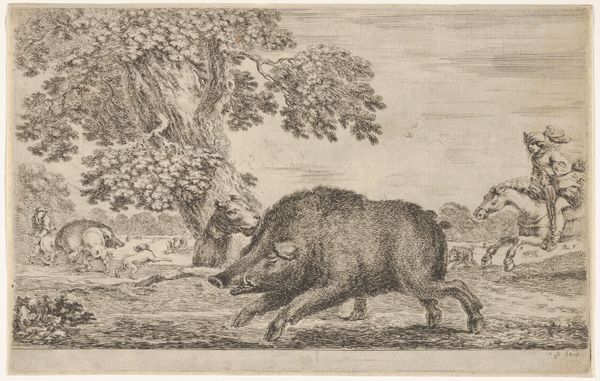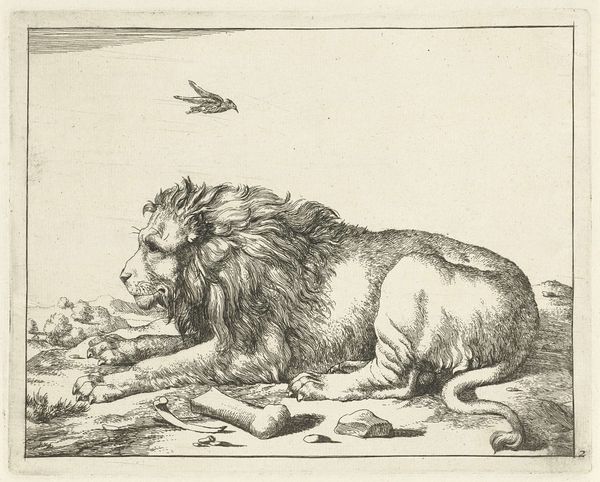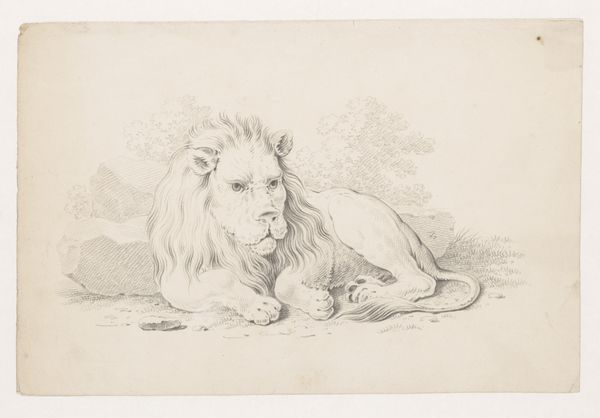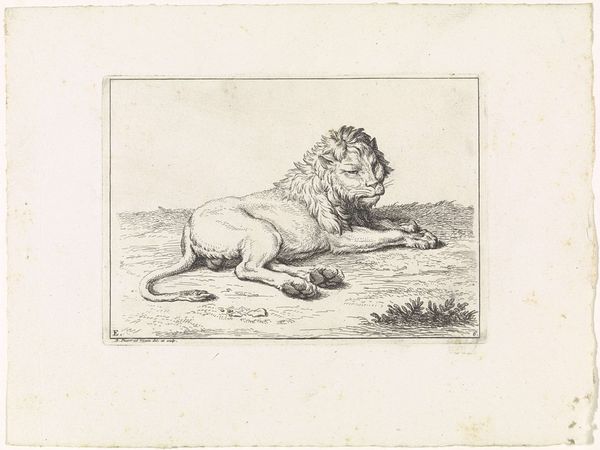
drawing, print, etching, engraving
#
drawing
#
animal
#
neoclassicism
# print
#
etching
#
landscape
#
academic-art
#
engraving
Dimensions: 13 1/4 x 10 1/4 in. (33.7 x 26.0 cm)
Copyright: Public Domain
Editor: Here we have George Stubbs' "A Lion Resting on a Rock," created around 1788. It’s an etching and engraving. The detail is remarkable, almost photographic, which I find really striking. How would you interpret Stubbs' work here? Curator: Let's consider the production process first. Engraving and etching, while seemingly reproductive mediums, demand skilled labor and precision. Think about the social context: this print allowed for the dissemination of Stubbs' images to a wider audience beyond the elite who could afford original paintings. Editor: That makes sense. It's almost like early mass media. But does that impact its value as art? Curator: The 'value' resides in its function. Was it consumed purely for entertainment or did it contribute to the contemporary understanding of natural history and, perhaps, Britain’s colonial reach, considering the exoticized landscape? Notice how the meticulous detail reinforces a scientific approach, yet it's mediated through the artistic choices in composition and lighting. Editor: So you’re saying the method of production, etching, and the distribution actually changes the artwork's meaning? Curator: Precisely. It's not just about representing a lion, but about how that representation circulates and what social functions it performs. What does this say about Stubbs and the lion when they are mediated through printmaking? Also, do we need to unpack his relationship with animal anatomy and maybe England’s colonial power at the time? Editor: That’s a completely different way of thinking about art than I’m used to. Curator: Thinking about art as not just the object, but a part of a process with deep societal links is very enlightening. Editor: I'm starting to see that. Thanks for opening my eyes!
Comments
No comments
Be the first to comment and join the conversation on the ultimate creative platform.
